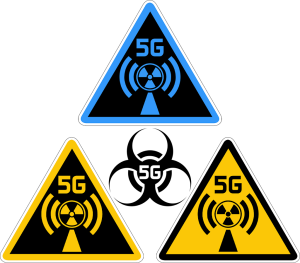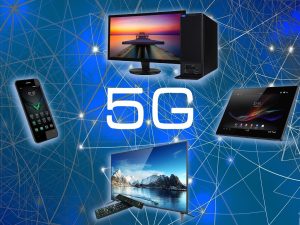Introduction
5G is a fifth generation portable network. It is another overall distant standard followed by 1G, 2G, 3G and 4G networks.5G far off advancement intends to give more critical unflinching quality to higher multi-Gbps top data speeds. Better continually adequacy empower new customer experiences and interface new endeavors. We have really come across one step ahead with this 5G Technology
Technology
5G relies upon OFDM (balanced repeat division multiplexing), a procedure for changing automated signs in a wide scope of channels to restrict impedance. Usages 5G NR air interfaces with 5G OFDM norms. 5G similarly uses far reaching bandwidth propels, for instance, sub-6 GHz and mmWave.5G will bring wide bandwiths by growing the usage of reach resources, from 4G to 100 GHz and past to sub-3 GHz. 5G can work in both lower gatherings (eg, sub-6 GHz) similarly as mmWave (eg, 24 GHz)Which will bring top breaking point, multi-Gbps throughput, and low inaction. .5G is proposed to pass on not simply snappier, favored compact broadband network over 4G LTE, yet likewise essential correspondences and partner. May moreover wander into new help zones. IoT unhindered. This is enabled by various new 5G NR air interface plan systems, for instance, another free TDD subframe plan.
5G Technology needs most of fiber
Generally, 2G and 3G adaptable network consistently used copper-based Time Division multiplexing (TDM) circuits, for instance, different fortified T1s or E1s, to interface cell districts to a near to Mobile Switching Center over the Mobile Backhaul (MBH) network. Disregarding the way that this now legacy MBH designing must be certain served the business well for a significant long time, it’s quickly exhibiting its age with approach of 4G. MBH upgrades are happening wherever on the world changing over legacy copper-based MBH serving cell objections to package based vehicle over fiber, which engages far higher capacities to best future-affirmation MBH networks. The extended choice of 4G LTE and LTE-Advanced adaptable association development is reviving these MBH fiber refreshes, which can and will be used by future 5G associations, given the essentially boundless information transmission that fiber-based networks offer.To improve, as far as possible, and as a rule Quality of Experience (QoE) of compact customers, Mobile Network Operators (MNOs) are getting little cells, which purposely place radios closer to customers. Little cells can be backhauled over copper (xDSL, HFC-based connection modems… ), air (microwave, millimeterwave… ), or fiber (Ethernet, PON… ). Every one of the three media decisions are being used today, to fluctuating degrees, with the advancement choice subject to money related, normal, managerial, and time-to-grandstand rules, which are consistently unequivocal to the goal geographic territory and application. Fiber-based little cell MBH is reliably the supported decision, at whatever point and at each conceivable chance, because the development is versatile, secure, appreciated, and all things considered, the most monetarily canny. In any case, there are without a doubt circumstances where passing on fiber simply is absolutely not an appropriate decision.
The most outrageous speculative download speed for LTE-Advanced (Release 8) is 300Mbps, but regular authentic world download speeds are far lower at about 40Mbps, in the event that you’re satisfactorily honored to attempt to have this sort of network incorporation in your area. As an extending number of convenient customers access more video-driven substance for longer time periods using growing pivotal mobile phones, Radio Access Network (RAN) move speed solicitations will continue creating, unabated.
4G versus 5G Speeds math
Today, a common present day macrocell is served by a 1GbE package based optical MBH network interface, notwithstanding the way that the normal traffic over this 1GbE genuine affiliation is about 200Mbps to 300Mbps, leaving some space for advancement, for 4G associations. Appropriately, the total absolute bandwidth ate up by the total of the synchronous adaptable customers to a typical macro cell is by and large tantamount to the most extraordinary theoretical download speed of a single LTE-Advanced (Release 8) customer affiliation. Genuinely, this is an unsavory measure yet you see where I’m going. Yet current MBH associations may get the job done for 4G today, the ensured induction movements of 5G is likely going to over-trouble existing MBH networks quickly.
It’s basic to lay fiber by and by to little and huge scope cells, any spot and at whatever point possible, if these phone objections are to be climbed to 5G in the coming years, as copper and air-based MBH options fundamentally can’t scale to the tremendous proportion of backhaul traffic that will be made by a 5G RAN(Radio Access Network). Fortunately, 5G is proposed as an overlay to existing 3G/4G compact associations, suggesting that for existing cells that need not be climbed to 5G later on, using air and copper-based backhaul decisions are commonsense options for the present, and tomorrow.
Most bandwidth ate up over versatile association remote transmissions is related to video-driven substance moving from a distant worker ranch arranged across a city, a country, or even an ocean. Our creating proclivity, dependence, and far and away reliance on our PDAs has driven them to being the as often as possible supported induction vehicle to online substance entrusting connection and xDSL modems to a more assistant work. If 5G is to be powerfully turned out in the coming years passing on obvious access speeds basically snappier to what’s available on the present 3G/4G associations, whatever the 5G speed will ultimately be, all bits of the wired association related with the RAN will be impacted by the deluge of substance gushing to and from worker ranches. The solitary vehicle media fit for scaling to these solicitations is fiber meaning it’ll should be open all finished, particularly in the RAN to the countless little and huge scope cells passed on around the globe.
Is 5G available now?
Really, 5G is currently here today, and overall executives started dispatching new 5G associations in mid 2019. In 2020, various countries foresee cross country 5G adaptable associations. Moreover, all critical Android phone creators are commercializing 5G phones. Besides, soon, considerably more people may have the alternative to get to 5G.
5G has been passed on in 35+ countries and counting. We are seeing much speedier rollout and gathering differentiated and 4G. Buyers are incredibly amped up for the high speeds and low latencies. Be that as it may, 5G goes past these points of interest by similarly enabling to urgent network, improved flexible broadband and gigantic IoT.
Where is 5G being used?
Broadly, 5G is used across three guideline kinds of related networks, including improved flexible broadband, critical correspondences, and the enormous IoT. A portraying limit of 5G is that it is proposed for forward similitude—the ability to deftly maintain future networks that are dark today.
Overhauled convenient broadband
Despite making our PDAs better, 5G convenient development can present new striking experiences, for instance, VR and AR with speedier, more uniform data rates, lower inertia, and lower cost-per-bit.
Key exchanges
5G can enable new networks that can change adventures with excessively reliable, available, low-idleness joins like regulator of essential establishment, vehicles, and tasks.
Immense IoT
5G is expected to impeccably relate an immense number of introduced sensors in basically everything through the ability to cut back in data rates, power, and adaptability—giving incredibly lean and negligible exertion accessibility game plans.
To sup up, the 5G scene is ceaselessly moving and will continue doing so well into one year from now. Here’s where we are by and by as we head into the end an extremely significant time-frame of 2020, and what we can envision from 5G once the new frameworks network standard covers a more prominent measure of the country with faster speeds and lower latency.
Pankaj Singh







